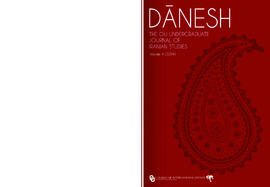| dc.contributor.editor | Kuyon, Kayleigh | |
| dc.contributor.editor | Standley, Corey | |
| dc.contributor.editor | Oberlitner, Adam | |
| dc.contributor.editor | Nazar, Jessamine | |
| dc.contributor.editor | Progler, Chris | |
| dc.contributor.editor | Albrecht, Emma | |
| dc.contributor.editor | Kayali, Sarah | |
| dc.contributor.editor | Ashbaker, Bailey | |
| dc.contributor.editor | Keaton, Joni | |
| dc.creator | Crynes, Aubrey | |
| dc.date.accessioned | 2019-03-08T22:43:00Z | |
| dc.date.accessioned | 2021-04-14T15:38:39Z | |
| dc.date.available | 2019-03-08T22:43:00Z | |
| dc.date.available | 2021-04-14T15:38:39Z | |
| dc.date.issued | 2019-03 | |
| dc.identifier.uri | https://hdl.handle.net/11244.46/1527 | |
| dc.description.abstract | On October 19th, 2016, the Islamic Republic of Iran's Supreme Leader, Ayatollah Khamenei, posted an image on Instagram that depicts Uncle Sam standing in front of what appears to be a club-like entrance blocked off by red rope with “globalization” scrawled across a sign overhead. The caricature looks harmless enough, until the viewer notices the signs by the door banning the atomic symbol as well as a stylized version of “Allah,” which fit right into Khamenei's (or whichever intern writes his Instagram posts) scathing caption: “Becoming global means giving in to the culture that has been imposed on the economy, politics and security of the world by a few big powers. This is the same as dependence without any difference!” The idea that globalization equates to dependence on larger Western nations is not Khamenei's own. Dependency theorists around the globe have echoed this same warning countless times. In the Persian language, this specific kind of Western- led dependence is often called ‘Gharbzadegi’, which can be translated as weststruck or westoxified. | |
| dc.format.extent | 19 pages | |
| dc.format.extent | 932,508 bytes | |
| dc.format.medium | application.pdf | |
| dc.language | en | |
| dc.relation.ispartofseries | Danesh ; 4 (2019) | |
| dc.relation.requires | Adobe Acrobat Reader | |
| dc.rights | © 2019, University of Oklahoma. | |
| dc.subject.lcsh | Iran -- Civilization -- Periodicals | |
| dc.subject.lcsh | Iran -- History -- Periodicals | |
| dc.title | Reworking Westoxification: Jalal Al-e Ahmad’s Original Conception of Westoxification and its Post-Revolutionary Reinvention | |
| dc.type | Document | |
| dc.type | text | |
| dc.contributor.sponsor | Farzaneh Center for Iranian and Persian Gulf Studies | |
| dc.description.undergraduate | undergraduate | |
